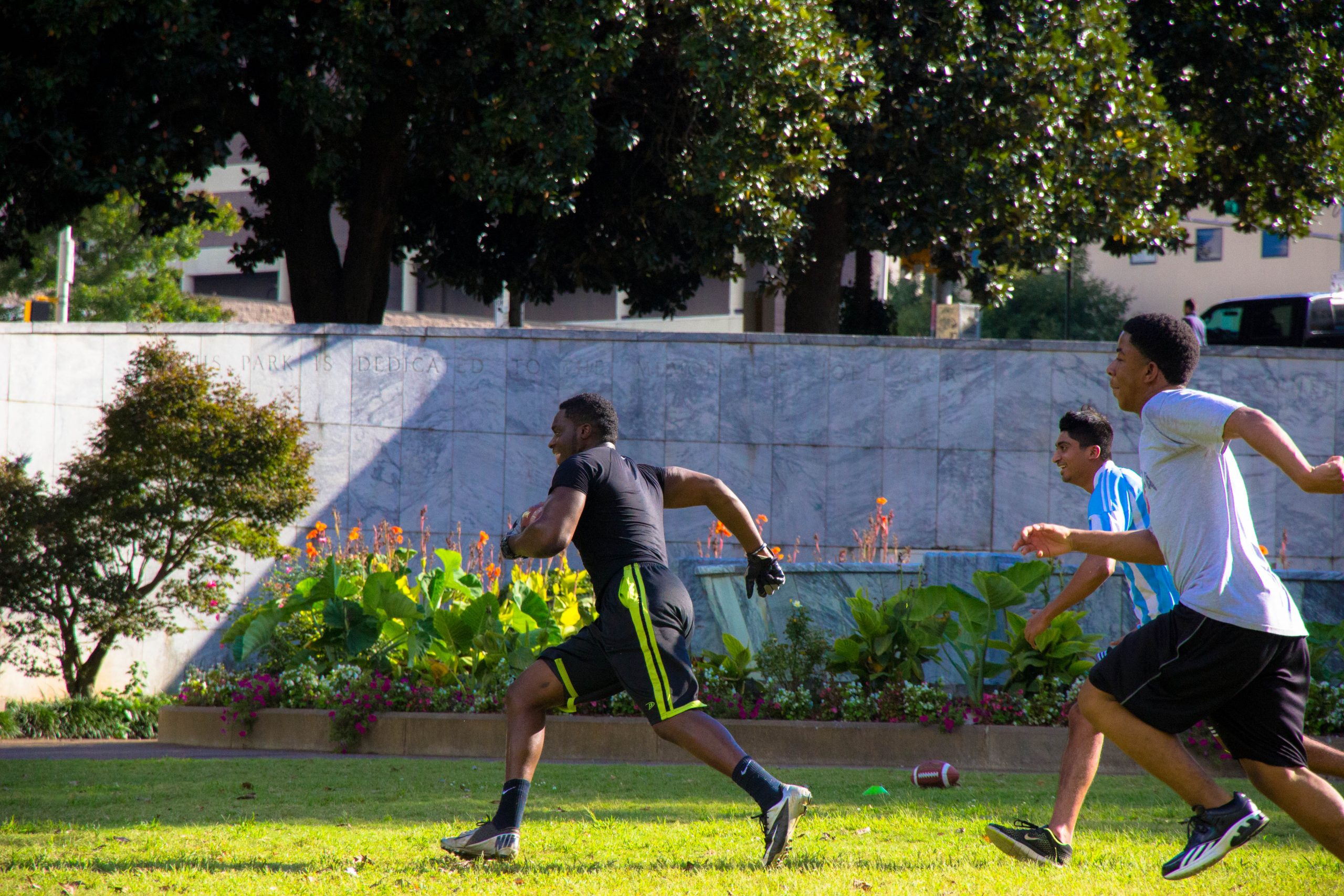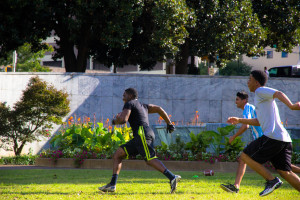

Photo by: Dayne Francis
Announced in 2013, Kell Hall is on track to be demolished and replaced by a greenway. Georgia State student Austin Lederman said he believes the upcoming greenway will create a more secure setting for lounging and studying than the city owned Hurt Park.
“I think a reason why people don’t go to Hurt Park is because a lack of perceived security,” he said.
Despite Hurt Park’s close proximity to Georgia State buildings, it is not officially a part of campus and is open to use by anyone. Jewanna Gaither, spokesperson for the Mayor of Atlanta’s office, said the park is owned through an ownership between the city and Georgia State.
“The City of Atlanta Department of Parks and Recreation owns Hurt Park. Georgia State University serves as an operating partner to the City of Atlanta for Hurt Park and provides the maintenance, as well as programming for the park,” she said.
Associate Vice President for Georgia State Facilities Management Services Division Ramesh Vakamudi said a primary goal of the proposed greenway would be to create a safe, comfortable and appealing hangout space for students.
Senior marketing major at Georgia State Spencer Maxwell said the limited size of greenery available at Hurt Park and the open use by civilians and the homeless discourage students from using the park.
“We get campus alerts all the time about people getting mugged at these parks,” he said.
While Maxwell said he thinks it could be difficult to keep the homeless out of the proposed greenway, the new green space would more likely keep him on campus longer.
“When I go home, I would rather stay here and study outside,” he said.
Lederman said the new stretches could also provide a sorely needed green presence to campus.
“Space is always an issue for any urban school. I think it’s great that they’re trying to make a green space,” he said.
Georgia State’s master plan said the greenway will provide safe and attractive pedestrian connections between buildings in the core of campus and anticipated outdoor landscaped communal study and social spaces.
Vakamudi said an important objective of the proposed greenway would be to unify and strengthen the existing campus core and the tentative completion for the greenway is 2018.
Lederman said he is concerned that the larger crowds of students the greenway will attract, the university will be unable to enforce its campus-wide smoking ban.
“If you create a bigger space to congregate, more people will congregate. And the issue right now is enforcing, for example, no tobacco spaces,” he said.
The greenway will be used in a similar fashion as the Library Plaza found between Pullen Library and Sparks Hall, Vakamudi said. Including the option of reservation by chartered student organizations and university departments.
Additionally, the greenway will serve as a necklace of green landscaped quadrangles and courtyards internal to the campus core with linkages outward to the surrounding frame of public streets and public open spaces, according to the master plan.
“The intent is to reduce and replace existing concrete surfaces with softer green and pedestrian friendly campus spaces,” Vakamudi said.
